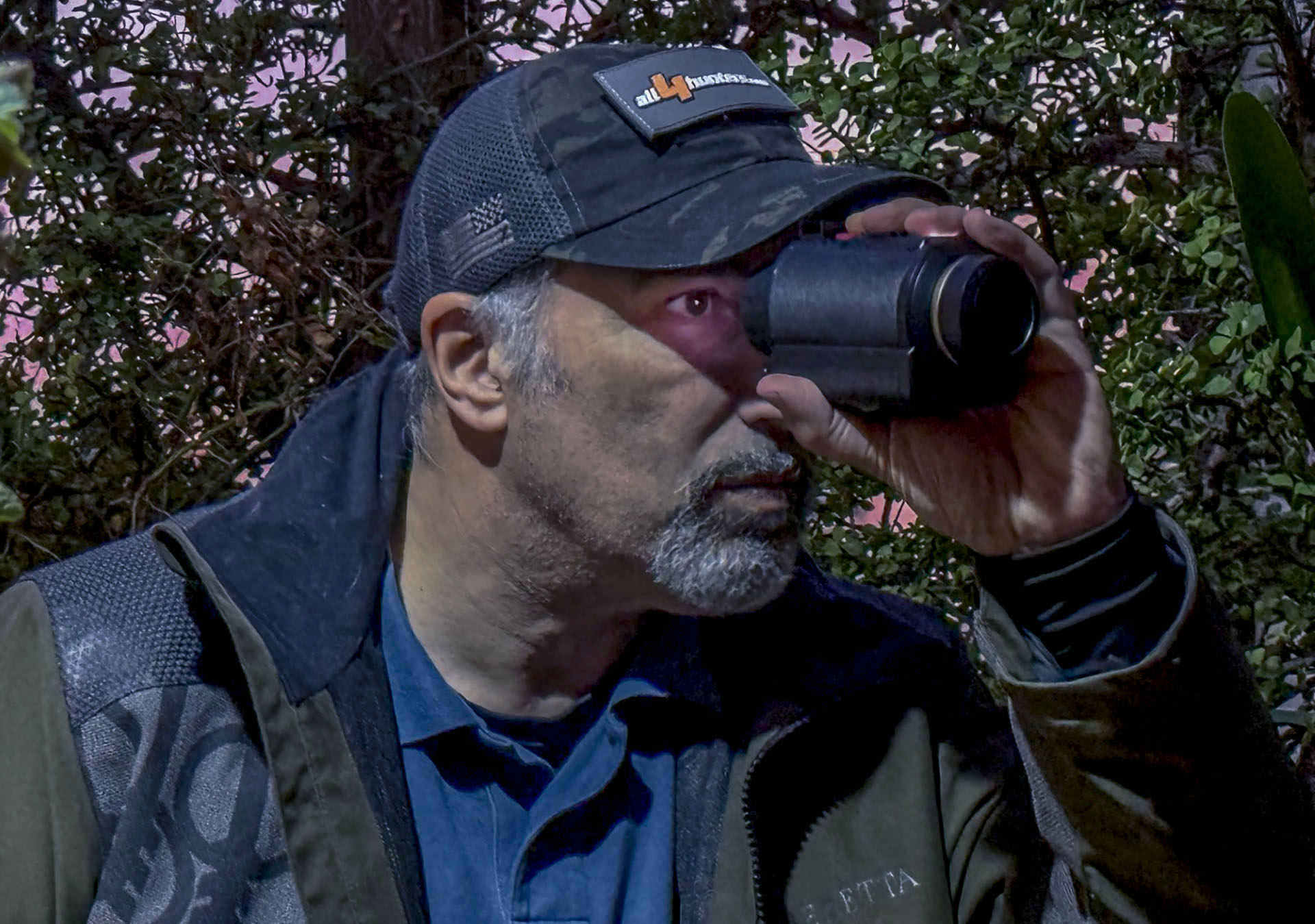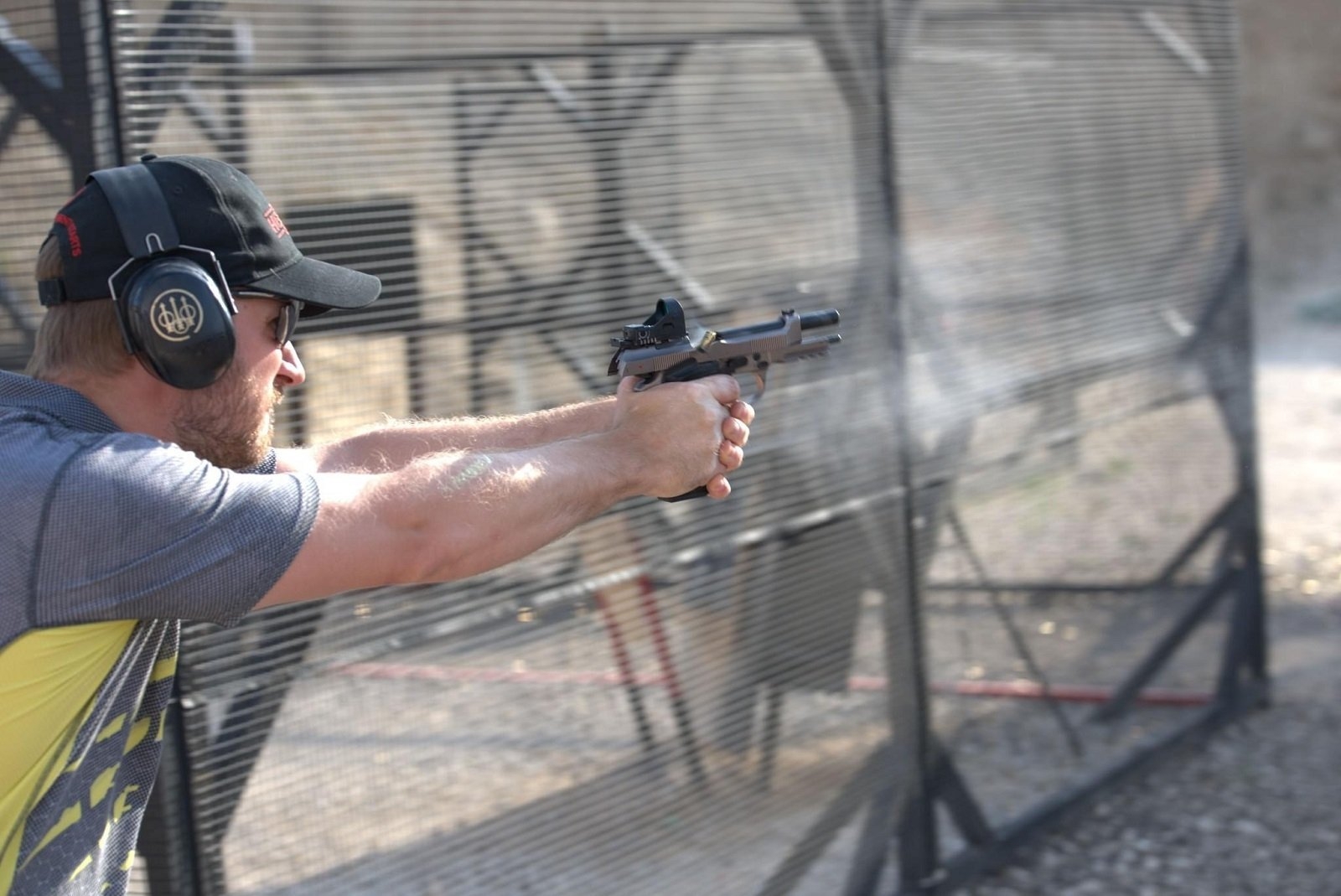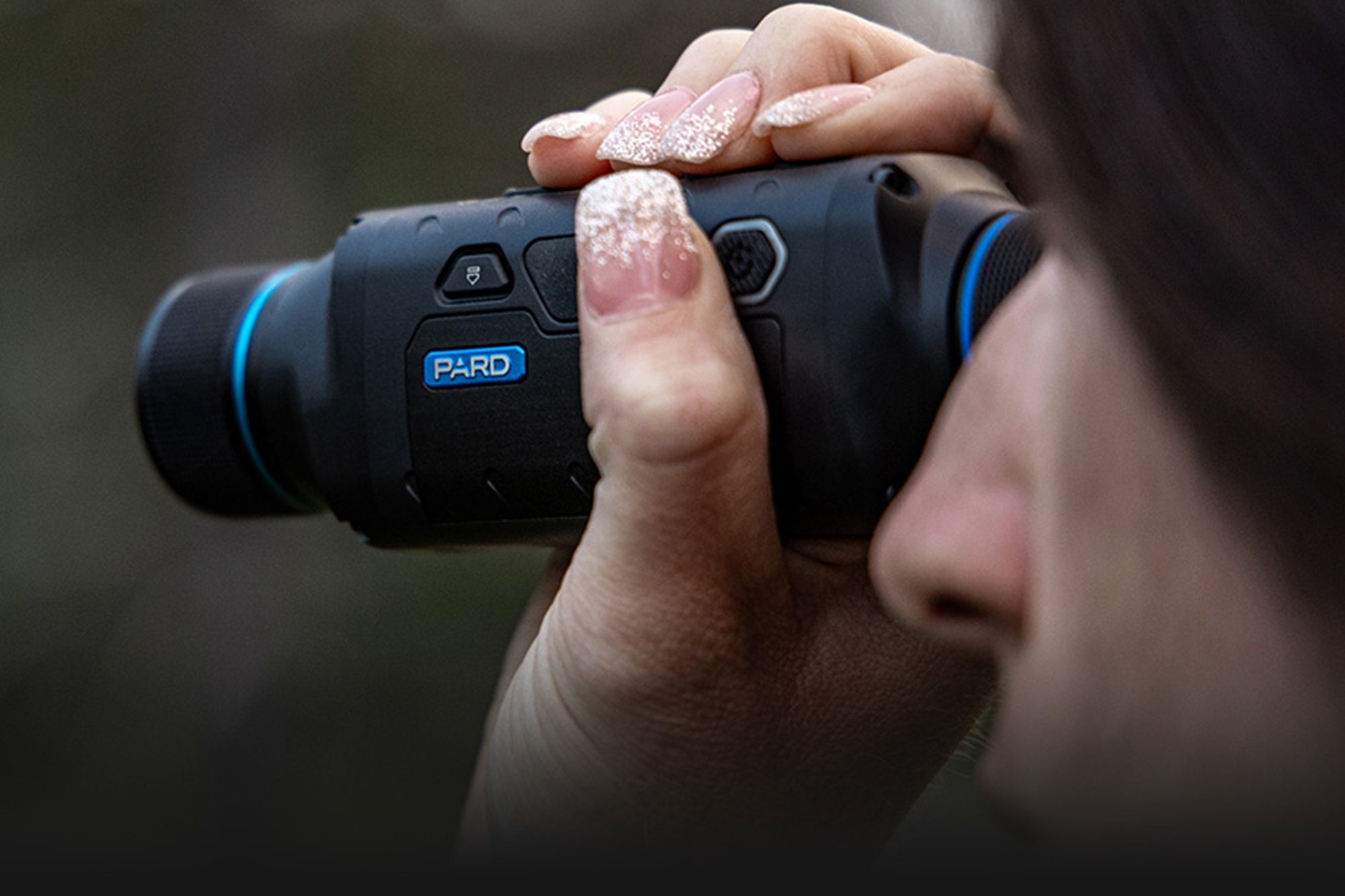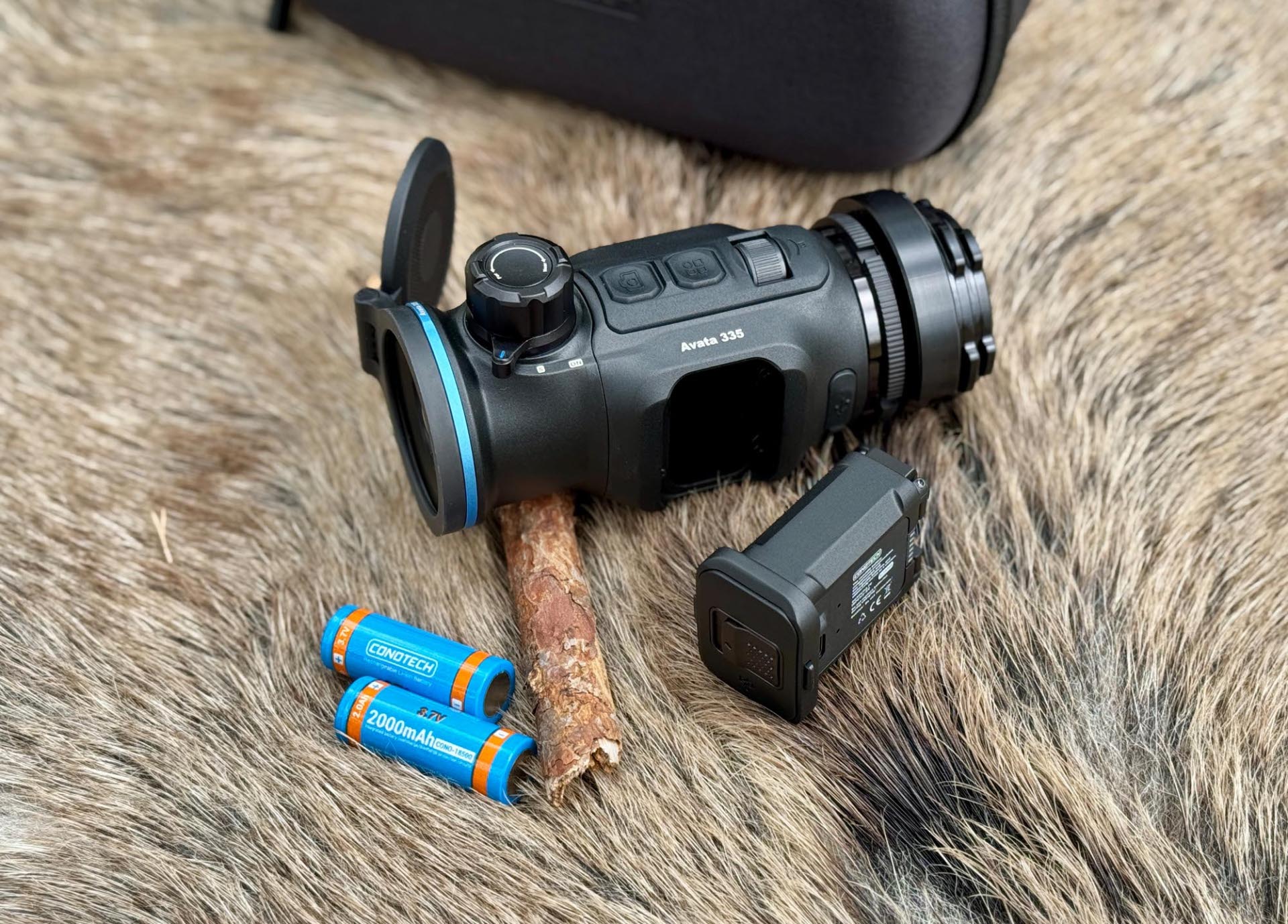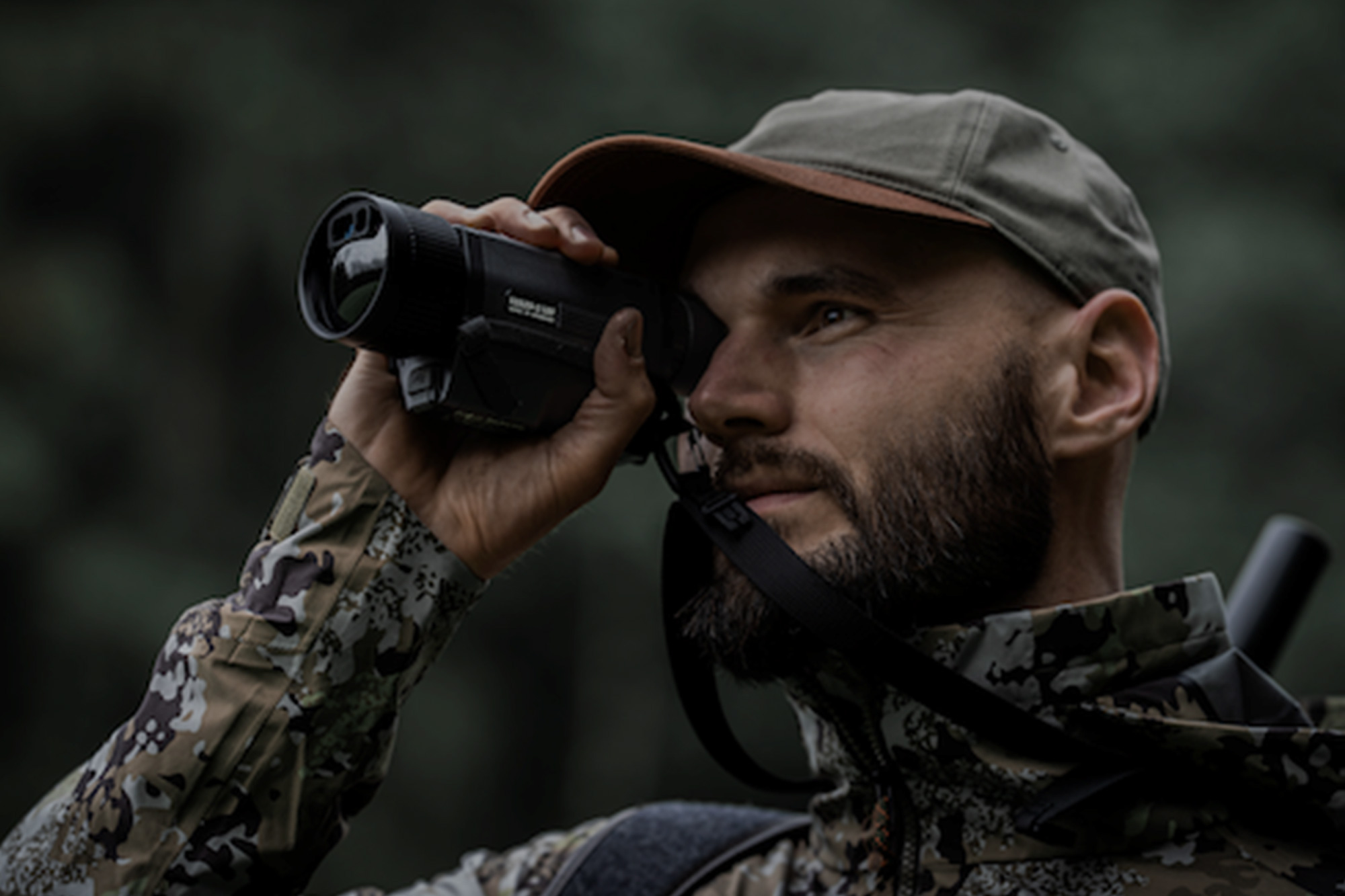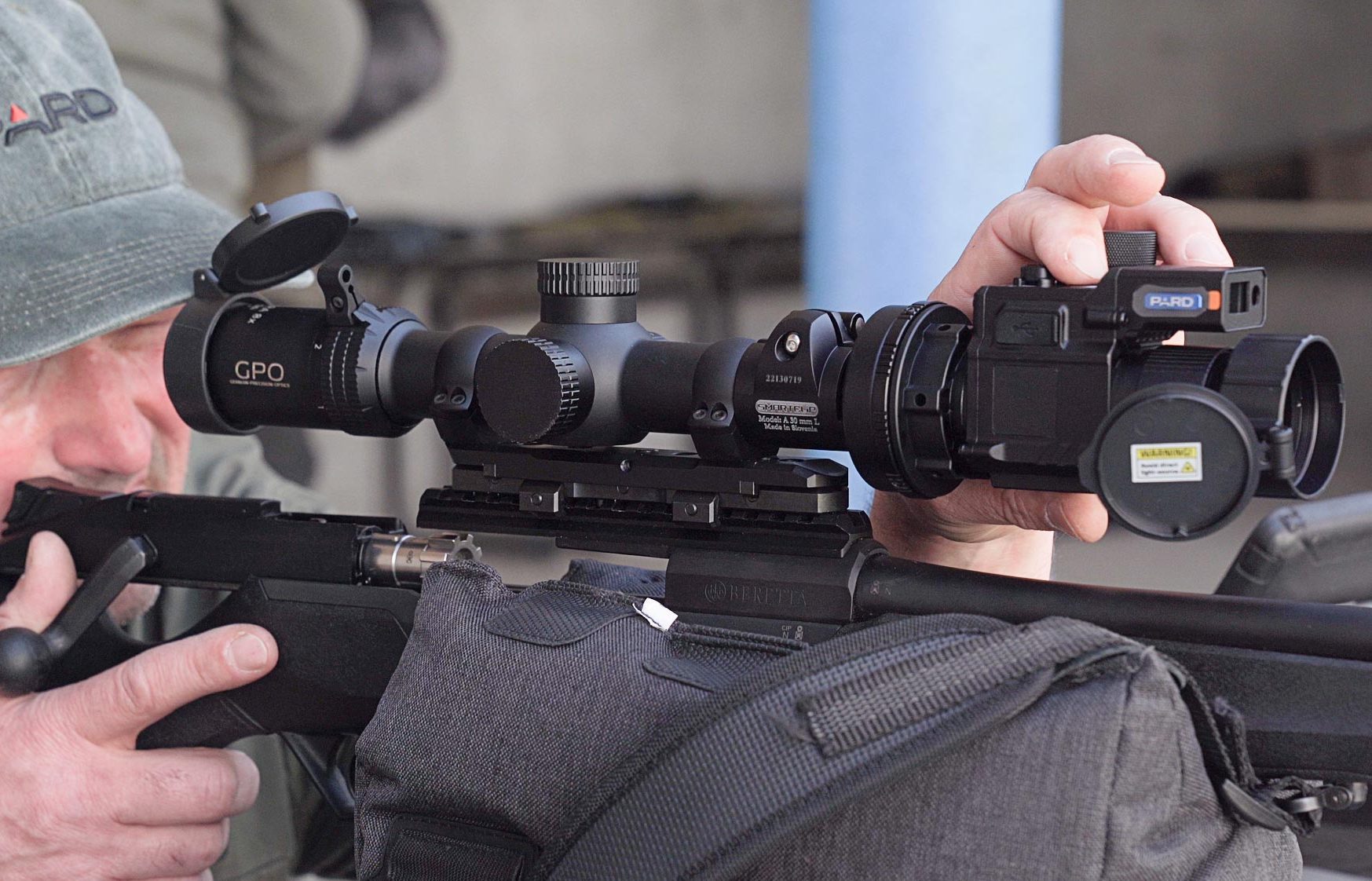
We already published a first test report focussing on the Conotech Pro series, more specifically on the Avata 335 thermal imaging clip-on. In the following article, you will now find out how the Aquila PRO 650LIIR thermal imaging handheld device performs and for which practical applications it is suitable.
In Conotech's extensive product lineup of thermal imaging devices, the Aquila series represents the range of hand-held thermal monoculars. These devices have now become virtually indispensable for effective hunting.
Early detection of incoming or approaching game is important not only at night, but also during the day.
A thermal imaging hand-held device makes hunting more effective, especially with the eerily quiet and well camouflaged roe deer in woodland areas.
The Conotech Aquila series at a glance
The current Aquila thermal imaging handheld series offers a wide range of models to cover the full spectrum of applications. These include lenses with a focal length of 19 mm to 50 mm, small 384 mm or large 640 mm sensors with <20 mK thermal sensitivity and, in some cases, a 2x optical zoom. In addition to the numerous model variants, all Aquila models have one thing in common: the consistent design as a single-handed device. More on this in detail later.
In 2025, Conotech's product evolution began with the new Aquila PRO series. Conotech has significantly revised the PRO series in the area of the thermal sensor as well as the integrated media memory: improvement of the thermal sensitivity to a NETD value of <15 mK, coupled with the optimisation of software algorithms in the latest firmware. The internal memory for photo and video recordings has also been doubled to 64 GB.
The Aquila PRO 650LIIR in detail

The unboxing alone turns anticipation into a product experience. As a premium product, it uses high-quality packaging to present itself to the customer in the best light before you even hold it in your hands. At first glance, the sturdy cuboid box with magnetic flap closure and high-gloss printing contains nothing more than an oval zip bag with a rubberised carrying strap. However, the case has it all: it is not a run-of-the-mill case, but a specifically designed EVA foam zip case, specifically shaped to hold the main product, including the supplied accessories. The main compartment provides the thermal imaging device with a "padded nest" thanks to its appropriately contoured shape.
They have also thought of useful little details, such as a Velcro elastic strap to secure the Aquila in the bag. It also features a padded divider between the lid and main compartment to protect the product. But we already know this from the Avata 335 from the previous product test.
Aquila PRO: handset, optics and accessories

The surfaces of the housing, which consists of various polymer and aluminum elements, are of absolute quality, both in terms of the choice of materials and the finish: noticeably smooth surfaces, no sharp edges or corners anywhere. However, functional surfaces and contours with a good grip are provided where necessary. The tubular housing has a maximum diameter of 61 mm, is 193 mm long overall and weighs in at around 590 g. The 50-mm lens of the PRO 650LIIR is protected by a sturdy lens flap, which can be locked and unlocked silently and locked in the open position. The hinge of the lens cover can be rotated tightly through 360° radially on the device so that it does not get in the way of either left- or right-handed users.
The Aquila is supplied with the following basic accessories: two 18500 rechargeable batteries in a practical plastic box, USB charging cable, a microfiber cloth with the company logo, as well as a rubberised neck strap with two quick-release fasteners. The latter proved to be rather impractical in the test, but could be easily solved by looping both straps into a quick-release fastener.
One-handed operation of the Aquila PRO
The thermal imaging hand-held devices in the Aquila (PRO) series only have 4 operating controls. These are arranged in line one behind the other in the top center of the device and are therefore consistently designed for one-handed operation, which can be carried out with either the left or right hand. Thanks to the size, arrangement and texture of the controls, they are easy to manipulate even when wearing thick gloves in the cold season. The controls themselves are operated via two wheels and two buttons arranged between them:
- A coarsely knurled focus adjustment wheel for the little finger at the front
- Behind it towards the eyepiece, two tactile multi-function keys, fingertip-sized for middle & ring finger
- Finally, a finely knurled controller wheel, a combination of rotary wheel and pushbutton for the index finger.
In contrast to the Avata clip-on, the entire navigation and operation in the menu of the Aquila is done exclusively using the controller wheel. We found this menu concept of "one-button operation" much more intuitive than with the Avata. There you also need the 2x multi-function buttons for scrolling in the menu tree.
The digital Conotech operating concept with just 3 elements
The two multifunction keys are assigned the following functions: On/Off/Standby and Laser measurement (circle symbol with dash, surrounded by laser beam symbol). The other for photo/video (camera pictogram).
The controller wheel works in the same way as the scroll wheel on a computer mouse with an additional "mouse click" by pressing the wheel.
The menu navigation works as follows:

- A quick click with the wheel opens the short menu on the right-hand side of the screen with the 5 essential display settings or selects the currently highlighted menu item (Enter)
- A long click with the wheel opens the settings menu on the left-hand side of the screen with a further 12 device functions or exits the current menu item (Exit).
Turning the wheel allows you to scroll through the possible parameters (on/off, value 1-10, etc.)
The Aquila PRO 650LIIR model that we tested is at the top of the Aquila series. This applies both to the decisive specification (sensor/lens/LRF) and to the price, which the manufacturer sets at 2,499 euros (RRP). If you would like to compare the specs and prices within the Aquila series, you can do so using the table below.

The primary question when choosing the right thermal imaging hand-held device should always be: what do I need for my desired application?
Even the entry-level model comes with a dual battery, 64 GB internal memory and the 4 standard color palettes: Black Hot / White Hot / Red Hot / Rainbow. In addition, two different tone settings are available to improve contrast under special weather conditions: cold / warm.
It is a pity that the laser rangefinder function is currently only available in the Aquila top-of-the-range device, i.e. the PRO series. A rangefinder in one of the cheaper devices would be a useful addition for young hunters on a budget (small 384-mm sensor) or in the smaller 35-mm lens with the large 640-mm sensor for an almost 6.5 m larger field of view, particularly advantageous in woodland areas.
DUAL Battery, the energy concept of the Conotech Aquila series

The Aquila series combines the advantages of both battery concepts established on the market. On the one hand, a battery is permanently installed in the device. This can be fast-charged to 90% in just 1 hour via the USB-C connection on the device. In addition, the Aquila can accommodate a compact type 18500 removable lithium-ion round cell. Two of these are included. One of these is then inserted into the device using a removable battery compartment on the left-hand side of the housing. The compartment is coded in the orientation and snaps securely into the housing with its two latches at the narrow ends, so that the device is once again dust and waterproof in accordance with protection class IP67. The direct benefit of an additional external rechargeable battery is that it provides a kind of runtime extender that can be replaced without interruption. In the sequence, the Aquila only uses the external cell if one is available and has sufficient charge. The basic power supply is provided by the larger internal battery. Operation without the external battery is also possible. The charge level of both batteries (internal & external) is displayed in the top right-hand corner of the screen with two separate battery symbols.
Alternatively, the device also has a USB-C port for external power supply via a power bank. An automatic standby function after two minutes of inactivity or the option to activate the power-saving standby mode manually using a key combination help to save power. If game comes into view, simply press any button and the Aquila is immediately back in operation.
For the practical test, we took the device with us to hunt wild boar at night. At an ambient temperature of around 15 °C, we were able to observe a runtime of around 3.5 hours for the replaceable 18500 cell. A total running time of 10 hours of continuous operation (at 22 °Celsius) is specified for the device. Of course, it is to be expected that this running time will be reduced during winter night hunting trips for wild boar.
Conotech thermal imaging handheld devices of the Aquila PRO series: technical specifications and prices
| Model: | Aquila PRO 650 LIIR | Aquila PRO 650 | Aquila PRO 635 | Aquila PRO 335 |
Objective Lens: | 50 mm | 50 mm | 35 mm | 35 mm |
Sensor Resolution: | 640x512 px | 640x512 px | 640x512 px | 384x288 px |
Pixel Pitch: | 12 µm | 12 µm | 12 µm | 12 µm |
NETD: | < 15 mK | < 15 mK | < 15 mK | < 15 mK |
Screen Resolution: | OLED 1024x768 px | OLED 1024x768 px | OLED 1024x768 px | OLED 1024x768 px |
Field of View at 100 m: | 15.4 m | 15.4 m | 22 m | 13 m |
Magnification (Digital): | 2.7x - 14x | 2.7x - 14x | 1.9x - 17.5x | 3.3x - 9.9x |
Battery: | Dual: Internal & | Dual: Internal & | Dual: Internal & | Dual: Internal & |
Internal Memory: | 64 GB | 64 GB | 64 GB | 64 GB |
Protection Class: | IP 67 | IP 67 | IP 67 | IP 67 |
Laser Rangefinder: | Yes | - | - | - |
Weight: | 560 g | 540 g | 540 g | 540 g |
Price: | 2,499 euro | 2,289 euro | 1,799 euro | 1,399 euro |
Conclusion on the Conotech Aquila PRO 650LIIR
Conotech's slogan "Precision without compromise" is the common thread running through this product test, as well as the previous one (Avata 335). The high-quality design of the product packaging, the rugged and well thought-out zip bag and the product itself would be rated 9 out of 10 on a points scale, if there was one at all4hunters.com...

The operability of all buttons and the controller wheel is very tactile and defined throughout. Only the focus wheel is very smooth. It also has to be for sensitive operation with the little finger. But it was too smooth for our taste. We noticed frequent, unintentional adjustment of the focus when manually picking up the device hanging in the neck strap. Perhaps a tactile indexing of the focus wheel with a higher resistance, as with the controller wheel, would be advantageous.
The battery magazine lock snaps into place with a resounding "snap". However, it can also be closed and locked quietly by opening and pretensioning the latches.
The imaging performance of the large 640 thermal image sensor with a pixel pitch of 12 µm and a NETD value <15 mK is remarkably fine and differentiated in color detail. With the Aquila PRO 650LIIR, you can easily analyse game for its characteristic features.
But who is this model suitable for, and for which area of application? The 50-mm lens in combination with the 640-mm sensor gives the Aquila PRO 650LIIR a field of view of 15.4 meters at 100 meters. The lens achieves a basic optical magnification of 2.7x. With a 5x digital zoom, the image can be magnified up to 14x. From approx. 10x digital zoom, the image then becomes very coarse and hardly allows detailed features to be recognised. In short, the Aquila PRO 650LIIR really comes into its own in open terrain with longer observation distances. The fully integrated rangefinder provides valuable distance data to the target at the touch of your ring finger, which is essential information, especially when stalking wild boar in the field at night. If you are at home in a purely wooded area, we recommend a version of the Aquila PRO 635 with a field of view of 22 meters and a magnification range of 1.9x to 10x. However, these are currently only available without the practical laser rangefinder.



